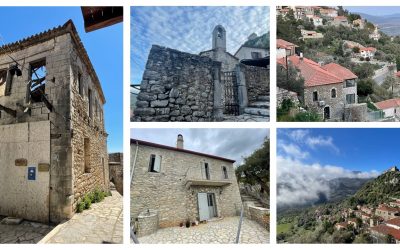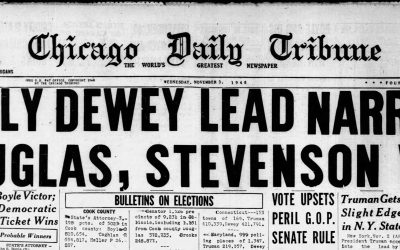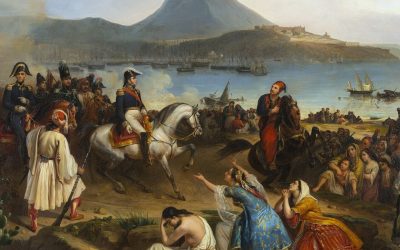Genealogy and history are two interrelated fields. They both study and reflect on the past and they both rely on historical sources, such as census data, birth and death certificates, immigration records, and other archival records. Tracing one’s ancestry, understanding family relationships, and documenting the lives of individual family members can provide a more personal yet essential perspective of history, as individuals and families are integral components of historical events. In this way, a genealogical case study can generate insights into cultural, social, political and national historical phenomena. The story of Avramakis Chatzisavvas is a characteristic example of how a genealogical research case can shed light on less known aspects of a remarkable historical event, the 1821 Greek Revolution. When a descendant of his requested assistance in her family history research earlier this year, none of us had foreseen the amount of historical information that would be discovered!
Asia Minor Greeks in 1821
Originally hailing from Smyrna, Asia Minor, Avramakis Chatzisavvas came to Greece from Constantinople upon the outbreak of the Revolution, along with his father and some relatives. In doing so he was joining a broader current of support. Although not a well known topic, the contribution of Greeks, not residing in the Greek mainland to the Greek Struggle was of great importance. For instance, many residents of Constantinople who had left the city early enough, had managed to join the revolution either as simple unarmed civilians, or by occupying more leading posts. Many became members of the “Friendly Society”, the secret revolutionary group based in Constantinople, while ships transporting weaponry and ammunition had departed already on the eve of the Revolution, heading to regions that were about to revolt.[1] Similarly, Avramakis Chatzisavvas joined the Greek Army.
Searching through various historical files, we managed to track down Avramakis’s revolutionary activity from the beginning until the end of the War. During the first, victorious phase of the Revolution in the Peloponnese, under the command of A. Ypsillantis, Avramakis partook in all the battles against the Ottomans, including the Siege of Tripolitsa (1821). During the siege of Nafplion (1822), he formed a military group at his own expense, but that came to an end very soon. Consequently, he lost all his monetary property, consisting of 80,000 Ottoman grosia.[3] Avramakis’s father was also present in the siege of Nafplion and died there from an epidemic disease, after participating in all the previous battles during the major campaign of Mahmud Dramali Pasha in 1822. Avramakis continued to offer his military services as an adjutant of Colonel Chatzichristos, and followed him for many years in all battles until the Colonel was captured in Navarino in 1825. He later went under the command of Lieutenant Colonel D. Kallergis in Crete (1826), General Favieros in Attica and Roumeli (1826), and under the leadership of Colonel Stephanos Servos, during the invasion of the Egyptian Army led by Ibrahim Pasha, which successfully suppressed the revolution in the Peloponnese (1826). Upon the arrival of the first Greek Governor, Ioannis Kapodistrias in 1827, Chatzisavvas was appointed in state posts and eventually became quartermaster of the Cavalry.
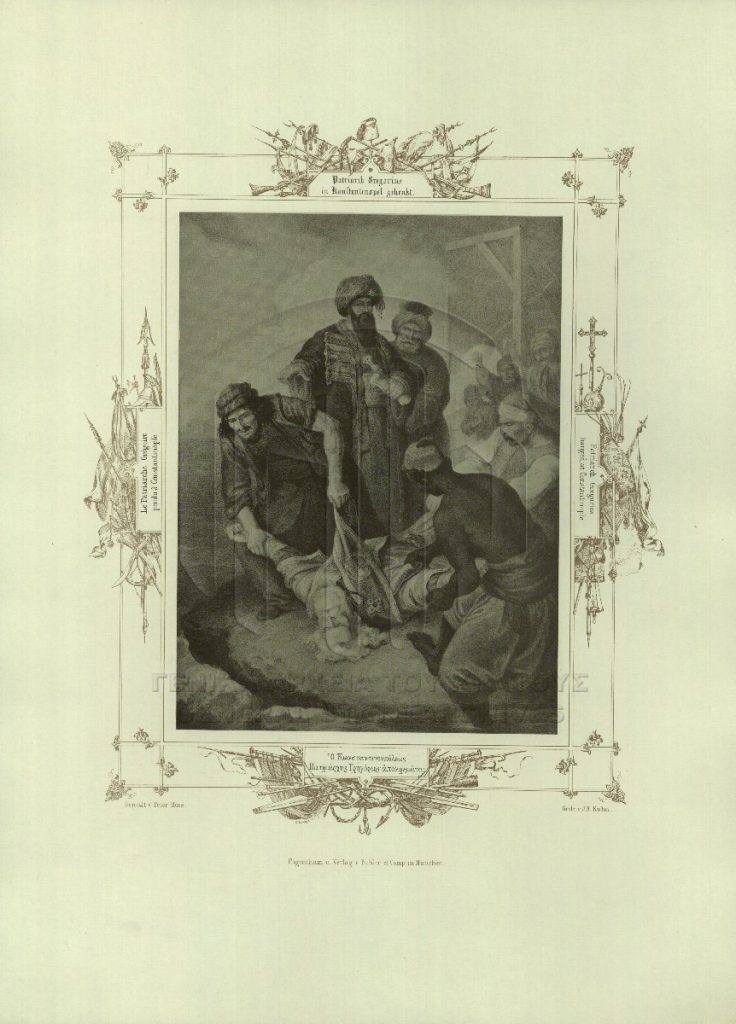
“Neofotistoi” and a Special Marriage
Apart from Avramakis’s revolutionary activity, our research shed light on other aspects of his life as well. When did he have family? Whom did he marry? Interestingly, it was discovered that in the later years of the Revolution, Avramakis married a Turkish Ottoman woman! Her name was Hati and she most likely was the daughter of an Ottoman official named Bektas Aga, owner of extensive land in the area of Corinth. The details about Hati, including her father’s and husband’s names, were found in an 1830 list of Muslim Corinthian women who converted to Christianity. The list also informed us of the name that was given to Hati upon her Christian baptism and consequent marriage to Avramakis: Aikaterini.
This impressive discovery about Chatzisavvas’s wife leads us to a less discussed topic of the revolutionary years, the phenomenon of Neofotistoi. The term Neofotistoi or Neofytoi refers to Muslims who converted to Orthodox Christians during the Revolution or immediately after the termination of hostilities.[4] During the Greek War of Independence, the situation for Muslims became quite adverse, especially in regions that were captured by the insurgents. The revolutionary authorities gave the Muslim residents of Greece the option either to integrate in Greek society through a Christian baptism, or to adjourn. Conversion to Christianity was almost crucial: their Muslim religion caused the disadvantageous state, as only those who accepted Christianity could enjoy the full rights of a Greek citizen. In addition, there were also some Islamized Christians, who took the opportunity to return to their religion. However, it must be noted that conversion to Christianity did not always ensure the rescue and stay of a Muslim person, as in many cases, the population could not avoid execution, captivity and labor in inhumane conditions. It is believed that those Muslims who chose not to convert left the Peloponnese in October 1828, when the last fortresses surrendered to the French troops, after the intervention of the Great Powers.[5]
The most informative sources about Muslims who converted to Christians can be found in official archives of the years of King Otto, such as the aforementioned list, or a catalogue of Neofotistoi who lived in the broader area of Nafplion and Lakonia (1834). Quite characteristic is that after their conversion Neofotistoi moved around Peloponnese for a variety of reasons, including the acquisition of properties in other areas. In addition, it appears that Neofotistoi were mostly young women and minors. Indeed, it is known that after the Siege of Tripolitsa (1821) many Muslim women sought refuge with their children in Christian houses, became members of the families and in this context were baptized. Moreover, upon conversion the vast majority of the women listed in the Neofotistoi catalogues got married to Greek men. And in fact, most of those men held a particularly high social status in Greek society. Many were military officers, former captains and powerful local figures, for whom marrying a Neofotiste entailed economic benefits.[6] This must have been the case with Avramakis and Hati (Aikaterini), although her family’s land was confiscated. From letters of Avramakis we learn that after marrying Aikaterini, the couple settled in Corinth, where Aikaterini’s family used to own land. However, when in 1836 King Otto certified the grant of land to converts as compensation, the family found itself with less land than previously owned.
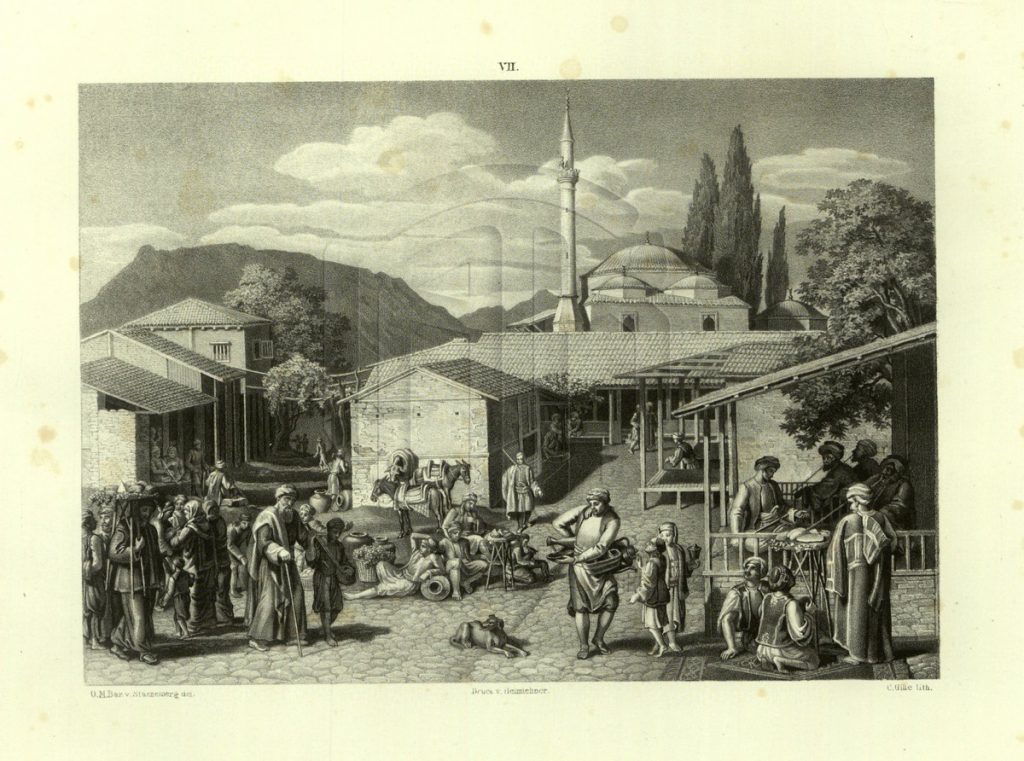
The fate of Avramakis and warrior compensations
Ending up with less real estate than expected and having lost his entire fortune during the War, Avramakis ended up relying on creditors. Soon, their threats costed him more from his wife’s property and significant amounts of land were lost for the payment of loans. Another part of the property was exchanged for a house in which Chatzisavvas and his family lived. Eventually, the family was left with less than 18 acres of land producing less than two hundred okas[7] of wheat per year.
Information about Chatzisavvas’s financial situation after the revolution is found in letters written by himself and sent to the Greek authorities. In those letters we see him seeking recognition for his military service during the struggle: a medal corresponding to his military rank and a poverty allowance owed to him as a former combatant. His wife’s property, he stated, should not be considered as his own as he was not the one to manage it, while out of dislike local politicians had been trying to hamper his applications for financial support. This brings us to another neglected aspect of the history of the 1821 Revolution, the compensations and distinctions of the veterans.
After the end of the war, the warriors of the Struggle for Independence were striving for recognition and a “place” in the new Greek society, hence the expectations from the state were high.[8] Consequently, the staffing of the Greek army with Bavarian soldiers and the dissolution of the Greek irregular troops in 1833, triggered frustration. In order to defuse the general disappointment of the Greek people, with a decree of 1834 the government decided to recognize the contribution of all the military officers and soldiers and to bestow commendations or medals (silver, bronze, iron), known as “aristeia” (distinctions) and accompanied by symbolic advantages, such honorary positions in official ceremonies.[9] The decree determined the criteria, limitations and benefits of recipients, while candidates would have to refer to a special catalogue of all the battles of the revolution, which was composed for the unassailable conferment of the awards. Candidates who didn’t have a diploma of their military rank would have to submit certificates from official colonels, proving their participation in the war. The applications, thousands in number, along with the required certificates, would be examined by local commissions of prominent veterans, where, it should be noted, personal feelings played a significant role.[10] Following these instructions, Avramakis Chatzisavvas included in his application a series of certificates provided by colonels Chatzichristos, Kallergis, Favieros etc. in order to prove his right for the medal and the allowance.
In contrast to the medals’ conferment, which aimed more at an ostentatious alleviation of the unpleasantness of the veterans, compensations were part of a serious social policy attempt on behalf of the Greek state. What is more, the granting of compensations and allowances sheds light on the long-lasting struggle of those veterans who were not among the famous and glorious fighters of the revolution, but had not struggled less. They belonged to a less known and more massive group of fighters, some of them disabled, ordinary people who survived and requested the humanitarian and financial aid of the state. In fact, the compensation policy was a continuation of the commitments of the revolutionary governments: the first national assembly (1821) had recognized the contribution and sacrifice of the fighters and committed to providing them aid, a resolution that was repeated in the two following assemblies (1823, 1826). Thus, the government of Kapodistrias (1828) legislated for the granting of pensions to the fighters and their widows, allowing the half of the designated amount in the end.[11]
The allowance policy continued, peaked during the years 1834 – 1836 (first years of King Otto’s Reign) and was more feasible until 1837, when the corresponding budget started to be decreased, even though the applications of the veterans continued to come in for many years later and actually with a sense of urgency. Apart from the compensations, the state policy to support and rehabilitate Greek society included the settlement in new areas and the constitution of a military unit of veterans in 1828. Similarly, another special military unit, the Phalanx, was founded in 1835, and included the most prestigious warriors of 1821. Although in theory the members of the Phalanx would have to fight in case of war, the unit was mainly a system of recognition and retirement.[12] One of the few hundred Phalangites was Avramakis Chatzisavvas, as we learn from a letter of his dated December 1838. Despite his inclusion though, Avramakis continued to feel underestimated, trying to get himself a higher rank and compensation. That was succeeded in the end of his life. In 1886, at the age of 86, Avramakis was awarded the diploma of the Silver Cross of the Royal Order of the Savior, for his services as Major of the Phalanx. Finally, he had gained the recognition he had been asserting throughout his whole life.
About the Author
Maro Rempoutsika studied history at the University of Athens and the University of Groningen. She works as a research assistant at Greek Ancestry.
[1] Vasilis Moutsoglou, “I Simvoli ton Konstantinopoliton ston Agona tou 1821” in I Simmetohi ton Mikrasiaton stin Epanastasi tou 1821, ed. Loukas Christodoulou, Nea Ionia, Center of Study and Promotion of Asia Minor Culture, 2021, 156
[2] Kurus, an Ottoman currency subunit was known in the Hellenic world as grosi [γρόσι], in plural grosia.
[3] In contrast to the phenomenon of Islamizations, the conversions to Christianity have not been discussed thoroughly, a phenomenon that is observed in the Balkans with the gradual withdrawal of the Ottomans from it. Regarding the Greek case, the conversions have been neglected historically, as they would probably cast doubt on the dominant Greek national and constitutional narrative, which aimed to establish a continuity between ancient and modern Greeks and would dispute the division between Greeks and Turks.
[4] “Neofotistoi stin Peloponniso tin periodo tis Epanastasis kai kata ta metaepanastatika chronia”, Accessed 29 November. 2023”, https://argolikivivliothiki.gr/2022/07/20/neophotists-in-the-peloponnese/; Lambros Baltsiotis, “Conversions of Muslims during the Greek war of Independence: transitions from a Greek-Orthodox nation to a civic nation”, Scandinavian Journal of Byzantine and Modern Greek Studies 7, 2021, 129-165.
[5] Baltsiotis, “Conversion of Muslims”, 129-165
[6] Greek measurement unit of weight. 1 oka = 1.28 kg.
[7] Sakis Gkekas, Apomahoi. Oi Agonistes tis Epanastasis Tou 1921 Sto Othoniko Kratos, National Hellenic Research Foundation, January 2021, 13-34
[8] Gregory P. Kontos, “Aristeia Geronthron”, Peloponnisiaka vol 31, Athens 2018, 549 -550
[9] Stauros G. Kapetanakis, Aristeia tou 1921 se Maniates Agonistes, Adolouti Mani Publications, 33
[10] Kontos, “Aristeia Geronthron”; Kapetanakis, Aristeia tou 1921, 33-38
[11] Kapetanakis, Aristeia tou 1921, 42-65

